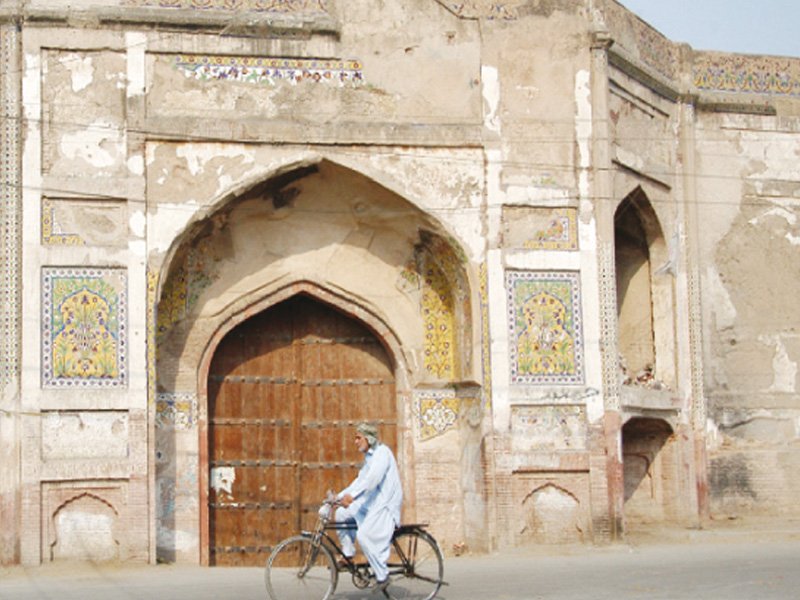
In a bid to restore its inherent glory and prevent it from encroachers, the provincial government – under its master plan – has decided to demolish 80 to 100-feet of encroached land surrounding the Shalimar Gardens and excavate roads to bring them to the original level of the gardens.
Meanwhile, the restoration of the outer walls of the gardens, the central pond of the second terrace, the fountains as well as several corridors are almost in the completion phase of their renovation.
The Shalimar Gardens were built in 1642 on the directives of the Mughal Emperor, Shah Jahan.
Heritage site: Munter and spouse visit Shalimar
The gardens have two terraces, with each terrace level built four to five meters higher than the previous one. The uppermost terrace of gardens is called the Bagh-e-Farah Baksh (bestower of pleasure) while the second and third terraces are jointly called the Bagh-e-Faiz Baksh (bestower of goodness). The first and third terraces are both shaped as squares, while the second terrace is a narrow rectangle.
The main attractions which greatly adds to the beauty of the gardens include the fountains and the water cascades, including the great marble cascade and Sawan Bhadoon.
Situated at Lahore’s GT Road, the historical gardens are home to hundreds of species of trees, flowers and fruits. Trees bearing mangoes, cherries, peaches, apples and other fruits can also be found in the gardens. Many years ago, the gardens used to get its water from the Shah Canal but now a tube well has been installed there.
In 1981, the Shalimar Gardens were inscribed as a UNESCO World Heritage Site as they embody Mughal garden design at the apogee of its development. The repair and restoration work is currently being carried out on the directives of the UNESCO.
Speaking to The Express Tribune, a repair worker named Muhammad Ayub said that he has been working at the gardens for many years and the tiles which had been broken due to natural wear and tear are replaced with the new ones.
The renovation and restoration of the gardens is the responsibility of the provincial department of archaeology. Shedding light on the ongoing repair and renovation work, director archaeology Afzal Khan told The Express Tribune that the restoration of Shalimar Gardens is being carried out under Lahore’s master plan.
Review: A tale of romance
“We have completed the renovation of different paths within the gardens, along with many walls, the garden’s eastern part, and the pools situated in the second terrace, among others, while the restoration of the surrounding wall is still in progress,” he said.
He said that encroachment of the surrounding areas of the gardens is a big problem as the outer walls require a lot of hard work to be repaired, but people paste advertising posters and carry out wall chalking which is harmful to the walls as well as to the historical value of the structure.
“According to the directions of the UNESCO, 80 to 100 feet of land surrounding the gardens have been encroached upon by people, which should be evacuated. Funding will be provided by the UNESCO to carry out the process,” Afzal Khan said.
“People who have constructed their houses and shops around the gardens will be compensated for evacuating the spots, and as soon as the estimation work is carried out, encroachments will be removed with immediate effect,” he explained.
Afzal Khan said that the walls of the third terrace of the gardens is at risk as its ground level is six feet lower than the other side due to the pressure from rainwater. As a result, the wall has become vulnerable to damage. Therefore, the department of archaeology has decided to bring it to its original position by digging a road alongside the wall.
“Although the renovation and repair work of the glorious Shalimar Gardens are very time-consuming and will require a lot of resources, it will be worth the effort to save this national and international heritage,” he concluded.
Published in The Express Tribune, June 24th, 2019.






















1714024018-0/ModiLara-(1)1714024018-0-270x192.webp)









COMMENTS
Comments are moderated and generally will be posted if they are on-topic and not abusive.
For more information, please see our Comments FAQ